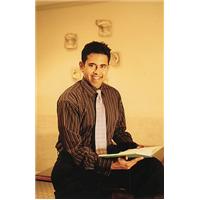
BEVERLY HILLS COSMETIC SURGEON Raj Chopra (pictured right) explains how the latest stitching technique can literally save your face following injury….
Cosmetic surgery is not just for the vain. Many of the techniques learned by surgeons are also used to repair serious injuries caused by car crashes and other accidents that would otherwise leave victims horribly disfigured. In Hollywood Raj Chopra is renowned for his expertise in facial surgery techniques and since stars earn their living from their looks he is the man they call to the Accident & Emergency.
Scars are generally considered unattractive and whilst it is possible to camouflage them with makeup plastic surgeons have become adept at hiding them following cosmetic surgery.
The scalp, for example, is used to hide brow lift incisions and intranasal incisions are used for rhinoplasty. To hide facelift incisions, most incisions are in or around the ear and hairline. For eyelid lifts (blepharoplasty), incisions are hidden in natural creases on the lid or near the eyelashes, or even inside the eyelids. If none of these options are available, the scar or incision should be aligned parallel with relaxed skin tension lines, which for example, run horizontally on the forehead.
So what can be done with a scar that has resulted from an injury? Not all scars need scar revision, especially those hidden in areas not easily visible (scalp, natural creases, etc.) However, for unpleasant scars including there are several surgical remedies.
The technique that might be used is individually based on the size, orientation, and body site involved. However, all techniques have certain fundamental principles in common to ensure a good result. These include meticulous handling of soft tissue, creating a tension free closure, placement of deep sutures to ensure a tension free epidermal closure, and symmetric closure of the skin edges after surgery. In many cosmetic cases, sutures placed under the skin edges are used to avoid the possibility of seeing stitching marks on the skin.
Finally, laser resurfacing can be used to blend the revised scar in with surrounding soft tissues to create not only a more even color match, but also create a smoother surface.
Contact information:
Raj Chopra, M.D.
Facial Plastic & Reconstructive Surgery
9400 Brighton Way, Suite # 410
Beverly Hills, CA 90210. USA.
Tel :(310) 858-1787. FAX: (310) 858-3787
E-mail: md@rajchopramd.com
Website: www.rajchopramd.com
